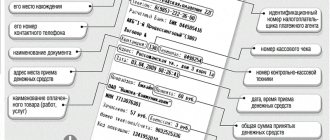Author of the article: Vladimir Danilevsky Last modified: January 2021 6512
The current legislation clearly defines the requirements for workplaces of employees of organizations performing work within the framework of job regulations. Any deviation from labor law norms is strictly punishable. At the same time, the employer himself should be interested in observing temperature standards in the workplace, because the productivity of the subordinate and the final result of his activities directly depend on this. The main document establishing the requirements for the microclimate in the premises of organizations is SanPiN. What you need to know about the latest act, and what liability a negligent manager faces in case of violations will be discussed in the article.
The importance of office climate
Temperature conditions greatly influence the well-being and performance of people. Increased or decreased air temperature, which affects an employee for a long time, not only has a negative impact on health, but also sharply reduces labor productivity. Office employees perform a wide variety of activities, most of which involve spending a long time in the same position, usually sitting and sedentary:
- work at a computer;
- draw up paperwork;
- communicate with clients;
- make decisions, etc.
Mental work and physical inactivity do not go well with an uncomfortable room temperature. Researchers have experimentally found that deviations even within one degree have such a strong impact on the efficiency of office work that it makes sense to even shorten the working day if it is impossible to provide the proper microclimate.
IMPORTANT! Ensuring proper temperature conditions in the office is a legal obligation of the employer, regardless of the form of ownership and level of subordination of the organization.
Employer's liability
If an employer does not comply with temperature regulations, then he violates two laws:
- violation of sanitary rules (SanPiN 2.2.3.548-96);
- violation of labor legislation (Article 22 of the Labor Code of the Russian Federation).
The punishment, which is based on Article 5.27.1 of the Code of Administrative Offenses of the Russian Federation, includes a fine of up to 20 thousand rubles or suspension of the employer’s activities for a certain time. In case of repeated violation, an enhanced penalty is applied, which is based on part 5 of Article 5.27.1 of the Code of Administrative Offences. In this case, a fine of up to 40 thousand rubles or deprivation of the employer’s right to occupy management positions for three years.
To prevent these violations:
- The employer must control the temperature and humidity in office premises.
- He should also be familiar with the table above and, in case of increased or decreased temperature, reduce the operating hours until the temperature returns to normal.
- For control, the employer is obliged to check the air conditioner and fans more often during warm weather.
- In winter, if the building has low heat, he must purchase additional heaters.
Comfort or optimum
Any employee working in an office wants his work to be carried out in comfortable conditions. But the concept of comfort is too subjective, because it is tied to the individual feelings of each individual person, and they are different for everyone. What is acceptable to one may be unpleasant to another. It is for this reason that the concept of “comfortable conditions” is not used in official documentation and regulations.
Instead of the subjective term “comfort” in professional vocabulary, a more precise and defined parameter “optimal conditions” is used. As for the optimal air temperature, this is a value determined through complex physiological studies and calculations, taking into account average human needs.
NOTE! Requirements for optimal temperature conditions are within the scope of legislation, which is recorded in the relevant regulatory documents.
How to measure the coolant?
Hot water is used as a coolant. Its temperature can be measured using various thermometers that are dipped into a glass of hot tap water.
You can also measure the pipe mode. The standard t is 50-70 °C.
Central heating
To determine the parameters of central heating indicators, you will need to take into account a number of standards. For example, for the lower central supply to the battery, the following indicators are used depending on the climatic conditions:
- environment +6 °C - input + 55 °C, return +40 °C;
- 0 °C - + 66 °C and 49 °C;
- -5 °C - +77 °C and +55 °C.
The two-pipe system has reduced performance.
Important! If the indicators decrease by 4 degrees during the day or by 5 degrees at night, a recalculation for the provided utilities must be carried out.
Measurement can be done in two ways. The first requires the use of an electrical meter, which is fixed to the battery using a thermocouple method. For the second, you need a thermometer, for example, a thermometer, which is installed on the radiator. 1 degree is added to the resulting value.
Hot water supply
To measure hot water supply, an alcohol thermometer is used, placed in any container with tap water. Water should have values of + 64-76 °C. Any increase in indicators outside the norm means an increase in utility bills.
SanPiN protects the health of employees
The sanitary standards of the Russian Federation are collected in a special code, which defines optimal hygienic and health standards for various areas of human activity, including employment. This is documentation related to the medical and technical fields, and at the same time legislative, and therefore mandatory.
The abbreviation “SanPiN” stands for Sanitary Rules and Norms,” it is somewhat consonant with SNIPs - building codes and regulations, but they should not be confused, these are documents from different working areas.
REFERENCE! The document regulating optimal conditions in the workplace is called SanPiN 2.2.4.548-96 “Hygienic requirements for the microclimate of industrial premises.” It provides labor protection regulations for office employees (in the text of the law they are classified as category A for labor costs) and production workers. These rules and regulations were adopted within the framework of Federal Law No. 52 “On the sanitary and epidemiological welfare of the population” of March 30, 1999.
The obligation for employers to comply with SanPiN requirements is supported by Art. 209 and Art. 212 of the Labor Code of the Russian Federation, which speaks of responsibility in the strict observance by employers of labor protection rules and timely measures of sanitary, household, hygienic, treatment and prophylactic, rehabilitation and other nature. Art. 163 of the Labor Code of the Russian Federation prescribes a set of measures for employers to ensure an optimal working microclimate.
How to protect your rights in case of violation in the workplace?
An employee must independently take certain actions if he understands that the microclimate established in the room where he has to spend most of the day may adversely affect his well-being or health.
The first way out of the situation is to temporarily leave responsibilities. To do this, an official application is prepared addressed to the manager. The text must include information that following the job description may lead to a risk of loss of health. In addition, it is recommended to refer to Art. 379 of the Labor Code of the Russian Federation, indicating the legality of these actions. This method of conveying your position to your superiors is rarely used in practice.
Article 379 of the Labor Code of the Russian Federation - Forms of self-defense
For the purpose of self-defense of labor rights, an employee, having notified the employer or his immediate supervisor or other representative of the employer in writing, may refuse to perform work not provided for in the employment contract, as well as refuse to perform work that directly threatens his life and health, except in cases provided for by this Code and other federal laws.
During the period of refusal of the specified work, the employee retains all rights provided for by labor legislation and other acts containing labor law norms. For the purpose of self-defense of labor rights, an employee has the right to refuse to perform work also in other cases provided for by this Code or other federal laws. Expert commentary
Kireev Maxim
Lawyer
Employees are afraid that the actions discussed above will lead to immediate termination of the employment contract. However, from a legal point of view, a statement supported by facts and the personal interest of an employee who does not want to lose his job is most often adequately perceived by management.
Statement of temperature violation in the workplace
The second method is to gradually convey relevant information about the indoor microclimate to the organization's managers. It is used almost always. For this:
- An appeal is drawn up addressed to higher authorities with a demand to take measures to eliminate violations associated with heating of the premises and humidity in them. For this, various options are offered, including the purchase and installation of special equipment (air conditioner, humidifier, etc.).
- If the situation does not change, the citizen must declare his right to a shortened working day. In this case, it is necessary to refer to SanPiN 2.4.548-96. It is worth noting that employers can simply circumvent the requirement by reducing the time a person is on site (increasing the number of breaks).
- If the above methods do not work, then the only option is to file a complaint against the organization with Rospotrebnadzor and the labor inspectorate. The latter structures check the fact of the application and confirm or deny the presence of violations. This is an extreme, but quite effective measure.
Complaint against an employer to the labor inspectorate (sample)
The employer is interested in the productive work of his subordinates and does not deliberately worsen working conditions. Therefore, the problem, as a rule, is resolved at the stage of the employee’s personal appeal to his superiors.
Seasonal requirements for office temperature
In cold and warm seasons, ensuring optimal temperature is achieved in different ways. Accordingly, the requirements for the microclimate will differ, as well as the measures provided for by SanPiN in the event of the impossibility of ensuring the temperature regime or its serious violations.
So that it doesn't get too hot
Prolonged exposure to elevated temperatures is particularly detrimental to the performance and health of workers. In a closed work space, it can be aggravated by large crowds of people, the presence of working office equipment, and compliance with a special dress code.
In this regard, the optimal temperature values and the permissible maximum during the hot period of the year are legally established. For office workers they are 23-25°C with a relative humidity of 40-60%. Temperature increases up to 28°C are allowed.
Exceeding summer temperatures in the office
If the thermometer inside the office deviates from the optimum by more than 2°C, it becomes much more difficult to work. The employer will have to supply air conditioning for employees and ensure its normal operation and timely maintenance.
If for some reason this is not done, the employee should not meekly endure the sweltering heat, while also trying to meet professional requirements. Sanitary standards allow workers to rightfully shorten the standard eight-hour working day, for which the temperature requirements are designed:
- 29°C allows you to work 6 hours instead of 8;
- 30°C allows for a two-hour contraction;
- each subsequent degree exceeding the norm reduces the working time requirements by another 1 hour;
- if the thermometer reaches 32.5°C, you don’t have to stay at work for more than 1 hour.
FOR YOUR INFORMATION! Many employees note the negative impact of air conditioning, comparable in harm to heat and stuffiness. The same requirements of SanPiN, along with temperature and humidity, limit the speed of air movement in the room, which should not go beyond the range of 0.1-0.3 m/s. It follows that the employee should not be under the blowing air conditioner.
Cold is the enemy of work
In a room that is too cold, no work is possible, especially office work, when the body cannot warm itself with movement. If for some categories of production workers a drop in ambient temperature to 15°C is acceptable, and even then short-term, for white-collar workers this is unacceptable.
During the cold period of the year, a comfortable temperature value should be maintained indoors - 22-24°C. Fluctuations in the norm of up to 1-2°C are acceptable, and for a short time during the working day the thermometer column can “jump” by 3-4°C.
What to do if it's cold in the office
Personnel must spend the full 8 hours at work unless the temperature drops below 20°C. Each subsequent step towards cold legitimately reduces the length of stay in an insufficiently heated room:
- 19°C makes it possible to work a seven-hour day;
- 18°C – 6 hours of work, and then in descending order;
- 13°C allows you to stay in the office for no more than an hour.
What about remotely?
Many workers are now working remotely. Should an employer monitor compliance with the temperature regime at an employee’s home?
“No, compliance with labor safety rules falls on the employee in this case,” Vice-Rector of the Financial Academy under the Government of the Russian Federation Alexander Safonov
If the temperature in the apartment is not maintained, then all questions should be addressed to the management company. By the way, the requirements for a home space are even more comfortable than for a work space.
Ours have increased frost resistance
“Of course, at low temperatures, personal protective equipment must be provided - clothing, shoes,” says Safonov. — You can install heaters. If working conditions still do not meet the standards, the employee can contact the Federal Service for Labor and Employment (Rostrud) so that the violations are officially recorded. But in practice, from my experience of traveling to enterprises, I can say that our people are quite stoic about the temperature in the workplace; I don’t remember any serious complaints about this. It happened that in the plant director’s office it was no higher than 16 degrees, and in the workshops it was even colder, and no one complained.
Compliance with labor safety rules in the case of remote work falls directly on the employee.
Photo: Alexey BULATOV
Features of temperature measurements
Since the duration of operation depends on the temperature component, fluctuations of just 1 ° C have such a strong impact on the efficiency of operation, it is necessary to maintain the accuracy of measurements.
If employers or employees are dishonest, there may be a temptation to overestimate or underestimate the true values of temperature indicators. Errors are also possible with inaccurate instruments and their incorrect placement.
To avoid complications with determining air temperature, legislation requires placing the thermometer at a distance of exactly 1 meter from the floor.
What should an employee do if the employer does not comply with the temperature regime?
Salaried workers often face negligence from their employers. What to do in this case? There are several options:
- ask the employer to normalize the temperature using equipment (air conditioning, heater)
- demand a reduction in hours of work in accordance with regulations
- file a complaint with Rospotrebnadzor
- contact the labor inspectorate for help
In the last two options, a special inspection will be carried out at the place of work, during which it will be determined whether an offense has been committed.
As a result, we can say that the employee has several legal methods of influencing the employer.
Video: Complaint against the employer and heat +31 in the workplace.
Employer's liability for failure to comply with office microclimate requirements
If management does not want to fulfill its responsibilities to provide staff with optimal working conditions, for example, does not install the necessary air conditioning in hot weather or a heater in the cold season, employees should not tolerate their arbitrariness for fear of dismissal. After contacting the sanitary and epidemiological service, the organization will be subject to an inspection, and if the claims are confirmed, administrative liability cannot be avoided.
In addition to the inevitable requirements to eliminate violations, a negligent employer will be issued a serious fine in the amount of 10-12 thousand rubles. And if he does not correct himself in time, then his activities may be stopped for 3 months (Article 6.3 of the Code of Administrative Offenses of the Russian Federation).
Heat rate control
Heat control is about optimizing heating while minimizing costs. To do this, it is necessary to improve thermal insulation and follow a number of rules. Among them, the sealing of window frames and openings, as well as the lack of closing of heating radiators, stands out. Furniture from them is installed at a distance of at least one meter.
Read also: Federal Law 131 on local self-government
Additionally, various thermostat options are used that can be adjusted as conditions change. An example would be a slight drop in temperature during sunny weather.
How to reduce heat loss in an apartment
A few words about SanPiN
Considering that the Labor Code mentions the temperature regime in passing, SanPiN stipulates in detail all the important points. This is a lengthy document, but understandable even for a non-specialist. Contains several sections that include requirements for jobs by level:
- noise;
- vibrations;
- infra- and ultrasound;
- electric and other fields;
- laser and ultraviolet radiation;
- on the microclimate in production premises.
As for noise, vibration and radiation, as life shows, people are not as concerned about this as the temperature in the work room or outside, when it is above 30 degrees. Under such conditions, workers’ bodies begin to experience serious stress, and this is no joke. At what ambient temperature does stress begin according to the law, is written in SanPiN.
Air conditioning - enemy or friend?
Another problem that can occur during warm or cold seasons is the air conditioner or split system. No one ever wants to sit under them or in the direction of the air flow. Therefore, the staff is divided into two conflicting camps, dividing the control panel or hiding it. How to deal with such a situation and who is right here, the requirements of SanPiN are explained to us in detail. It specifies standards for air movement, the speed of which should not exceed 0.1-0.3 m/s. Simply put, you should never be under the flow of a running air conditioner and work stations must be moved to another part of the office. And in order not to get sick with acute respiratory diseases, it is imperative to carry out regular cleaning of split systems.
To summarize, I would like to note that all of the above should be regulated between you and the employer by labor protection. We will not list all the articles of the Labor Code, which stipulate all the nuances, temperature standards and disciplinary liability for non-compliance with norms and standards. But it is always important to know that your comfort at the workplace and failure to provide it are enshrined in Decree of the Government of the Russian Federation No. 399; violation of labor safety rules is punishable under Art. 143 of the Criminal Code, and your rights as an employee are regulated by Art. 5.27 Code of Administrative Offenses of the Russian Federation.
And if the dialogue between you and the employer does not work out, then you can contact the sanitary and epidemiological service or write to the State Labor Inspectorate in the region of registration of the legal entity or individual entrepreneur for further inspections and prosecution. And then all temperature conditions in the office will be strictly observed according to sanitary standards.
Responsibility of utilities for violation of temperature standards
First of all, non-compliance with standards means the possibility of demanding a reduction in payment for services by 0.15% per hour.
Over long periods, the decrease in value is significant, which will lead to various legal battles. Compensation can be obtained by applying to the court. The level of responsibility depends on the nature of the offense and the presence of consequences. Lack of liability is possible only with a timely response and elimination of the problem. In other cases, liability can be either administrative in the form of a fine and personal sanctions, or criminal with severe consequences.
In case of damage to property and any type of damage to the utility service, civil liability may arise if the court rules in favor of the residents.








